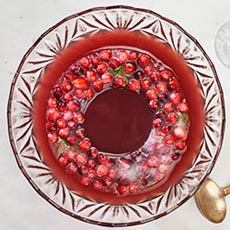TIP OF THE DAY: Honor The Cranberry With Cranberry Drinks
|
Cranberries are a group of low, creeping evergreen dwarf shrubs or trailing vines, that grow in acidic bogs in the cooler regions of the U.S. and Canada. The plants belong to the heather family, Ericaceae, along with the bilberry, blueberry, huckleberry, azalea and other rhododendrons. The year’s three cranberry holidays are all in November: November 21st is National Cranberry Day, November 22nd is National Cranberry Relish Day, and November 23rd is National Eat A Cranberry Day. > Check out all of the year’s 35+ berry holidays. > Cranberry cocktail recipes are below. Native American tribes from New England Pequod and Wampanoag to the Leni-Lenape of New Jersey to the Algonquins of Wisconsin variously called them sassamanesh (very sour berry), ibimi (bitter berry) and atoqua in their local tongues. The English name derives from kranebere, German for crane berry, so called by early Dutch and German settlers in New England who saw the flower, stem, calyx and petals as resembling the neck, head and bill of the local sandhill crane (photos #1 and #2) [source]. The Wampanoag People of southeastern Massachusetts had been harvesting wild cranberries for 12,000 years by the time the Pilgrims arrived. The Leni-Lenape of New Jersey and other tribes in the East also were blessed with cranberry bogs. Native Americans used cranberries for grits and pemmican—deer meat, mashed cranberries and fat, pressed and dried as a convenience food for travel. Cranberries mashed with cornmeal were baked it into bread. While maple sugar and honey were used to sweeten the sour berry, some souls with a palate for the super-tart even ate them fresh. The Wampanoag also showed the Pilgrims how to use the cranberry as a food, dye, and medicine: fever-reducer, wound poultice and seasickness remedy. Pilgrims recorded the processing of fresh cranberries into juice in 1683. The first cultivation of cranberries took place in Dennis, on Cape Cod, around 1816, by Captain Henry Hall, who had served in the Revolutionary War. He noticed that the wild cranberries on his land grew better when sand blew onto them. He then began to transplant the wild vines to areas where he could spread sand on them himself. Following his success, other landowners eagerly converted their peat bogs, swamps and wetlands into cranberry bogs. In New Jersey, cranberry farming began in 1835 in a bog in Burlington County [source]. Cranberries were sold to whalers and sailors, who stored them in barrels of water to help combat scurvy. Cranberries found their way across the northern states to the Pacific Northwest, and were first shipped to Europe in the 1820s. From England, they were brought to the cold-appropriate countries of Scotland, Russia and Scandinavia. They’re now grown commercially in Chile as well. Today, U.S. Farmers harvest approximately 40,000 acres of cranberries each year (source). In the 1960s, farmers developed a labor-saving process called wet harvesting. They flood the bog with water so the cranberries floated to the surface, where they are collected by machine. The First Cranberry Sauce Elizabeth Lee, a cranberry grower in New Egypt, New Jersey, boiled damaged cranberries into jelly. It was so popular that she began canning and selling it as “Bog Sweet Cranberry Sauce” in 1917. She later teamed up with Marcus Urann, a savvy lawyer and businessman from Massachusetts, who had started a business in 1912 with a similar goal (he later developed cranberry juice cocktail, in 1933). Together they and two other growers formed the company that became known as Ocean Spray—today the largest cranberry growers organization in the U.S. [source]. The fruit is turned into jam, juice, sauce and sweetened dried cranberries, with the remainder sold fresh to consumers for cooking and baking. |
|
|
|
The famous/infamous can that provides the jellied cranberry sauce “log” became available nationwide in 1941. According to Smithsonian Magazine: Americans consume 5,062,500 gallons of jellied cranberry sauce—Ocean Spray’s official name for the traditional Thanksgiving side dish we know and love that holds the shape of the can it comes in—every holiday season. That’s four million pounds of cranberries—200 berries in each can—that reach a gel-like consistency from pectin, a natural setting agent found in the food. [source] Here’s more cranberry history. A fresh cranberry will bounce, due to the pocket of air inside (photo #4). That’s also why they float. The cranberry is one of only three fruits native to North America that were not known in Europe*. The others: the blueberry and the grape. |
||
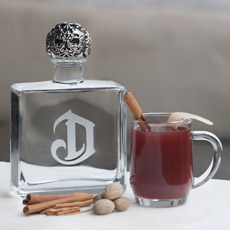 [6] Cranberry Toddy (photo © DeLeon Tequila).
[7] Cranberry punch (photo © Ocean Spray). |
DRINKING CRANBERRIES In Colonial days, a drink known as the Hot Toddy was created as a way to cure ailments (or at least, that was the excuse given). Made with rum from the Caribbean, it was also called Hot Buttered Rum: rum, hot water, spices and a pat of butter. Today, cranberry juice is drunk as: We adapted this cocktail recipe (photo #6) from one sent to us by DeLeón Tequila. Ingredients Per Drink |
|
|
Preparation 1. SIMMER together the cranberry brew ingredients. Combine with tequila in glass mug. 2. GARNISH with the orange slice. How can you resist this holiday punch, with a cranberry wreath in the center (photo #7)? The wreath is actually an ice mold to chill the punch, filled with fresh cranberries and leafy herbs. The recipe, from Ocean Spray, is for an alcohol-free punch; but you can add spirits to taste. Ingredients For About 15 Six-Ounce Servings 1. MAKE the ice mold. Fill a ring mold with cranberries and “leaves” (herbs or other leaves) and water, and place in the freezer. 2. COMBINE the cranberry juice cocktail, orange juice and optional spirits in a large punch bowl. Gently stir in soda just before serving. Garnish and serve. TIP: To keep the punch cold, store the juice mix, soda and optional spirits in the fridge until ready to serve. We used two large pitchers, which fit easily into the fridge. ____________ *Strawberries and raspberries were also known to Europeans; and many other fruits, such as the pawpaw and the saskatoon, are native to North America, but are not commercially important. CHECK OUT WHAT’S HAPPENING ON OUR HOME PAGE, THENIBBLE.COM. |
||
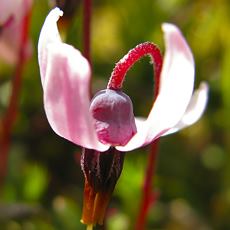
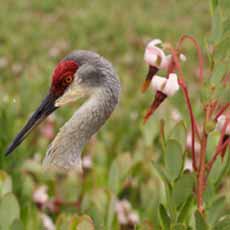
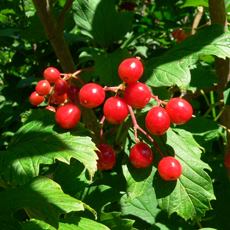
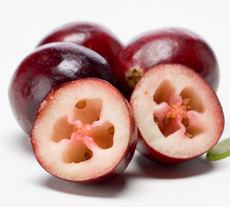
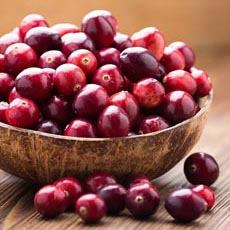 [5] Fresh cranberries (photo ©
[5] Fresh cranberries (photo © 